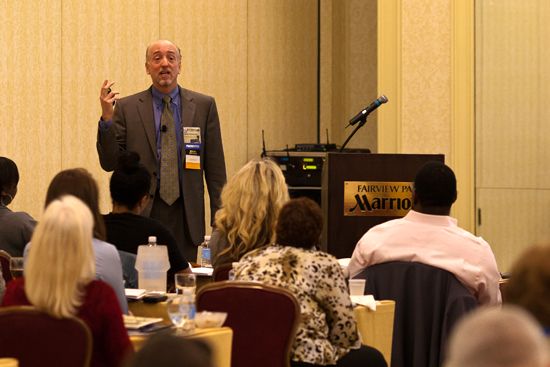
Making Rain on a Small Business Budget (Part 1): The Challenges
- 1.Making Rain on a Small Business Budget (Part 1): The Challenges
- 2.Making Rain on a Small Business Budget (Part 2): The Solutions
- 3.Making Rain on a Small Business Budget (Part 3): A Bigger Idea
Companies (large and small) are struggling to make more with less. Business development budgets are tight. Competition is getting tougher. Sequestration lingers. Large businesses have deeper pockets. That means more discretionary funding, and more budgetary flexibility than small businesses. Small businesses have fewer resources, but have many of the same BD challenges that large business have to grow their businesses efficiently and effectively or (in some cases) to even stay in business.
This article summarizes the APMP presentation I delivered at Bid & Proposal Con in Atlanta, on May 30, 2013, and provides some high-level insights into the following questions frequently asked by businesses with small (or shrinking) budgets:
- What are the major BD deliverables and milestones that really make a difference?
- How do I increase my win rates?
- What people, processes, and technologies do I need to compete effectively for business?
- Can I do anything now to position for future growth?
- What about sequestration?
The Problem
Making rain in the business development context is about influencing decision makers and recommenders to win new business and making money for your company. Many (perhaps even most) companies are throwing their money away by pursuing opportunities they know little about, against competitors they think they understand, without enough resources to do the job right. In the end, too many bids are lost and the pain of submitting those bids is too high. I am so convinced about this that I have literally thrown more than 300 one-dollar bills away at the beginning of my presentations on this topic to the tune of Pink Floyd’s hit Money to demonstrate my point.
Small business budget owners have unique challenges when it comes to making rain for their organizations. In a 100-plus page report, the National Federation of Independent Businesses (NFIB) Research Foundation identified the top problems and priorities for small businesses. Two of the top six problems/priorities (1 – Costs and 4 – Finances) had to do with money.
According to the Small Business Administration (SBA), there are 28 million businesses in the US. SBA classified 99.9 percent of these companies as small businesses. Two years from now 30 percent of these businesses will be shut down or dissolved. In ten years, 70 percent of these companies will be out of business. If money is so important to the success of these companies, how can they use their money more wisely to grow or stay in business?
Challenge #1: Win More…Work Less
The most obvious way to make the money you need to stay in business is to win more business.
Win More—Maximize the Gain. Maximizing the gain is about winning new business contracts. However, in order to win more you have to either bid on more pursuits or increase your win rate on existing pursuits. This is a tall order for most small businesses since these companies generally lack the foresight, discipline, and resources to increase their BD effectiveness.
Work Less—Minimize the Pain. Business owners and executives naturally want to win more business. That’s their job. However, many think that the harder or longer they work the more business they will win. They constantly seek to strike a balance between pushing their teams to the limit in order to win more.
The idea of increasing business development efficiency and effectiveness at the same time (winning more while working less) often seems counterintuitive. However, with better planning, standardized processes, staff augmentation, and other actions, small business executives can make significant improvements in BD efficiencies that result in winning more and working less.
Challenge #2: The Real World vs. The Ideal World
Let’s say that you agree with the idea that winning more and working less is the key to making more money to grow or stay in business. This idea seems a lot easier to implement for larger organizations that have more financial, human, and technological resources at their disposal. So how can businesses with small budgets make the necessary changes with limited resources?
In the ideal world, there are no constraints and unlimited resources are operating at optimum efficiencies. If you’re an architect, the ideal world looks like the award-winning home Frank Lloyd Wright designed in the 1930s, Falling Water. Falling Water is considered one of the all time greatest examples of American architecture that has stood the test of time. If your idea of the perfect world is something more recent, perhaps Google (recently named by Fortune Magazine as the Best Place to Work) is more relevant. Google achieved this status by paying close attention to their employees and collecting data on everything from why people leave the company, and the optimum number of interviews, to the length of lunch lines, the size of lunch tables, and even the size of lunch plates. An even more dramatic, and close to home example, is the Lockheed Martin F-35 fighter jet that beat out Boeing for a $500 billion prize. These are all great best-case scenario examples of organizations with virtually limitless resources and they stand in stark contrast to the constraints and limitations of small business budgets.
In the real world, companies with small business budgets often operate under a very different set of circumstances where constraints, limitations, and inefficiencies are the norm. The picture for these businesses looks more like an ambulance racing at high speed to save a patient than the tranquility of Falling Water or the military marvels of the F-35. In the real world of small budgets, decision makers assume too many responsibilities, take short cuts, and make calculated risks in order to “make do” with their limited resources. As a result, they often wait until they have reached a crisis before they seek help. A typical call for emergency assistance requires immediate attention (within 24 to 48 hours) where the survival of the patient (the proposal) is uncertain.
The Big Idea
The light bulb is a great icon to represent innovation and change—the perfect metaphor for exactly what small budget owners and managers need to win more and work less. Thomas Edison invented the incandescent light bulb in the 1870s and changed the way we see things. However, the incandescent bulb is inefficient, burns hot, and burns out, just like many small budget owners!
The Compact Fluorescent Lamp (CFL) became commercially available in the 1990s. It uses 80% less power, lasts 10-15 times longer, and costs 70% less per year to use than the incandescent. If every American home replaced one incandescent 60-watt bulb with a CFL, it would save as much energy as taking 1.3 million cars off the roads. Despite these compelling statistics, the CFL has been slow to gain popularity.
Why are so many of us in the dark when it comes to CFLs? Mainly because old habits are hard to break…most of us resist change, and on top of that, CFLs cost more that incandescent bulbs.
In order for you to maximize the gain (win more) and minimize the pain (work less) within the practical limits of the real world, you need to break free from old habits, old processes, old technologies, and old ways of thinking. During my presentations on this topic, I asked volunteers to smash old light bulbs as a symbolic commitment to breaking old habits. This gesture helps people realize that to be more efficient and effective you need to change the way you do things today.
Let’s Share Ideas. What are your thoughts on the major challenges small businesses face? Do you disagree with any of my suggestions? What recommendations resonate with you the most? Let’s continue the dialogue.



